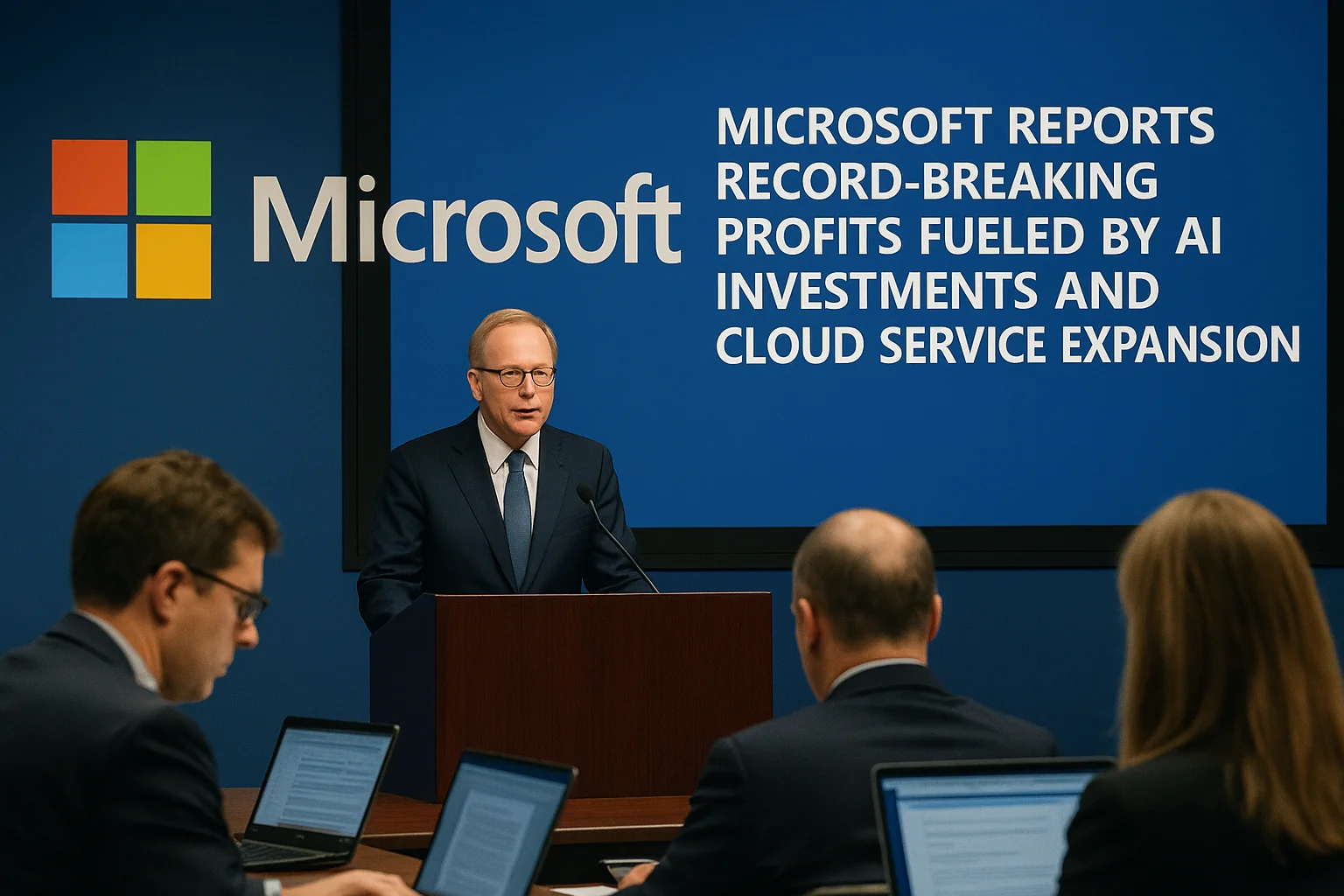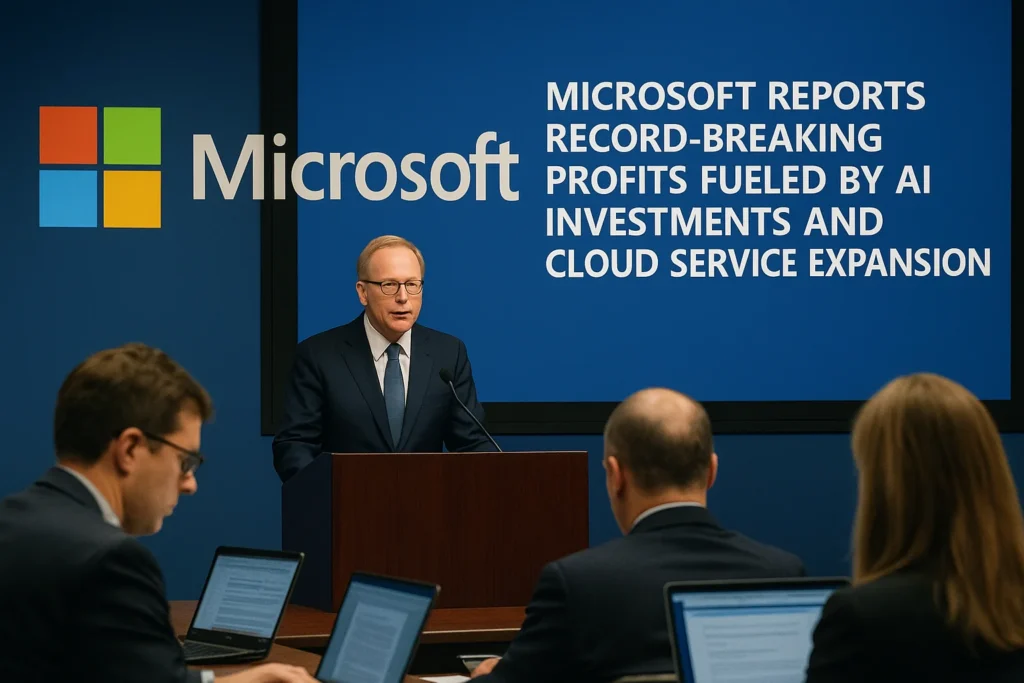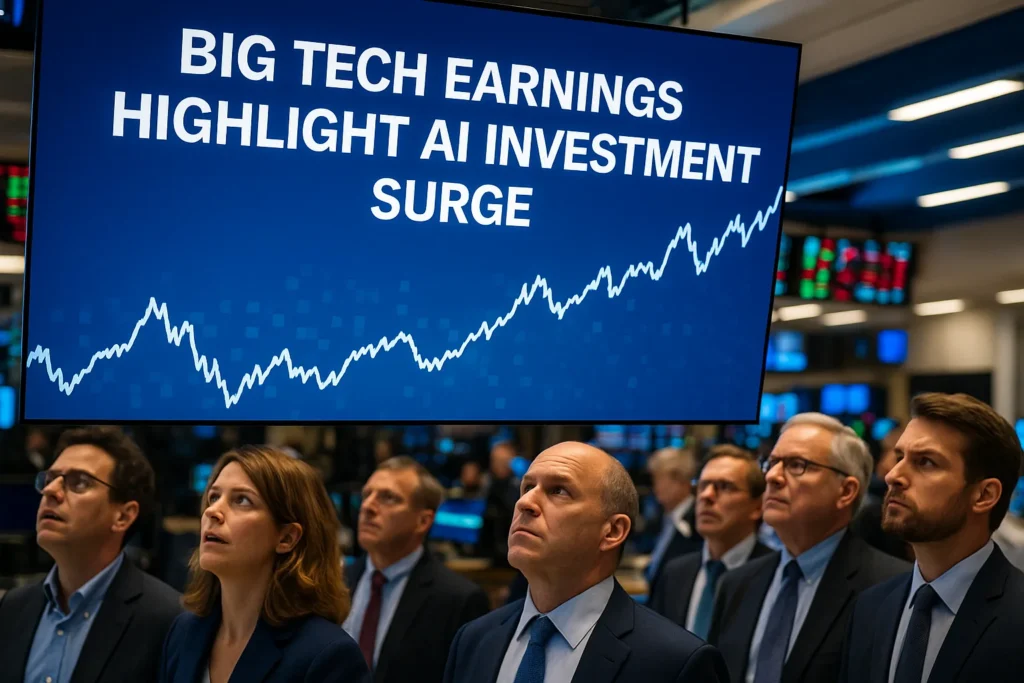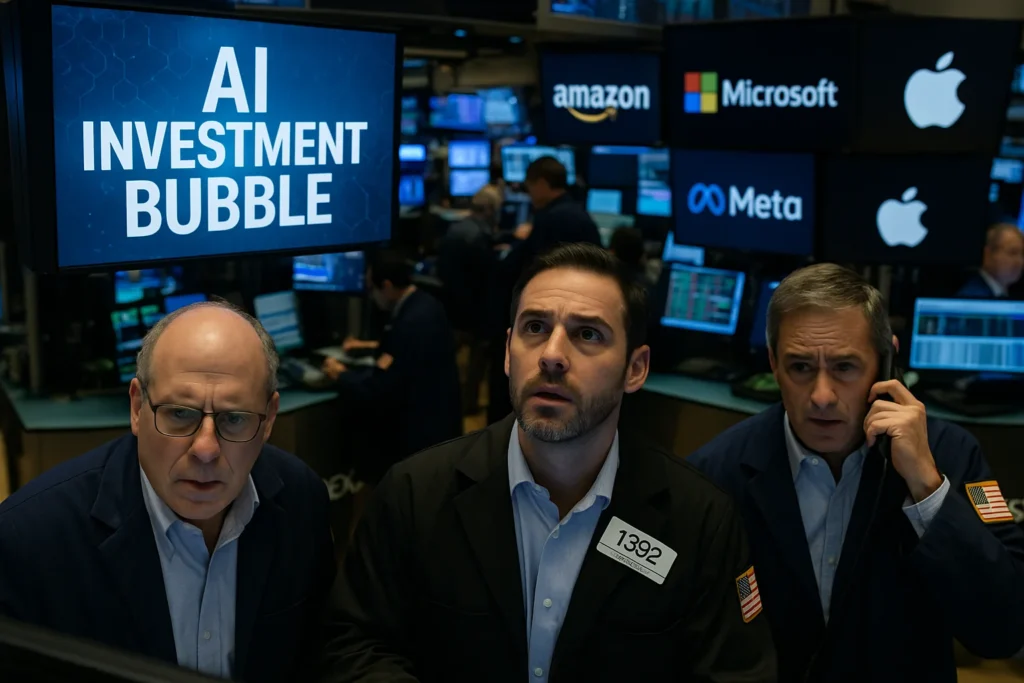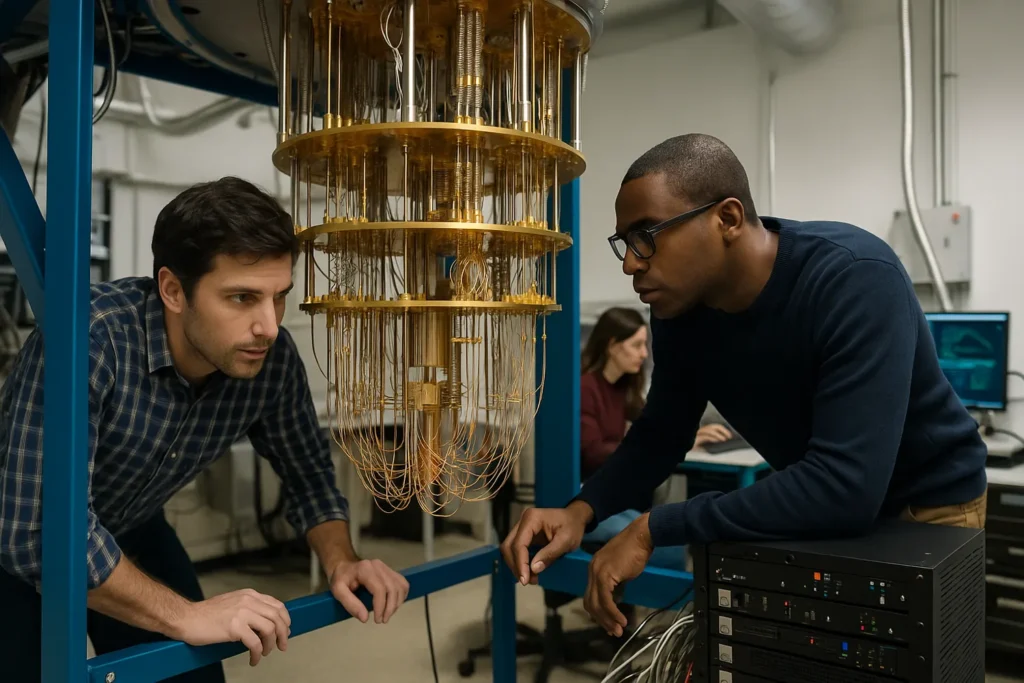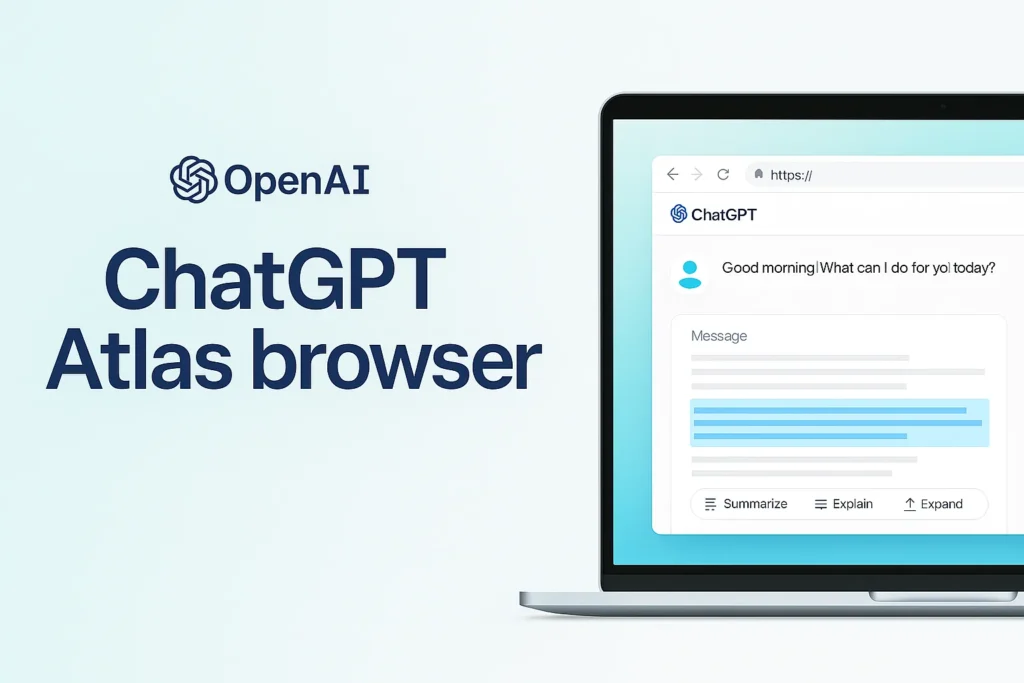The Quarter That Changed the Game
Microsoft AI-driven earnings have shattered every previous record, marking a defining moment not only for the company but for the global tech industry. The latest financial report shows unprecedented profits — fueled almost entirely by artificial intelligence. Azure’s cloud revenue surged by double digits, Copilot subscriptions crossed every projection, and OpenAI integration continues to pull millions of enterprise users into Microsoft’s ecosystem.
For years, Redmond was the steady veteran of the tech world — competent but cautious. Today it stands at the forefront of a revolution it helped bankroll. The company’s bet on artificial intelligence has become the most profitable pivot in modern corporate history.
The AI Payoff
Behind Microsoft’s triumph is a perfect storm of timing, infrastructure, and monopoly. When the world rushed into the AI boom, few companies had both the capital and cloud muscle to meet the surge in demand. Microsoft had both. Its $13 billion partnership with OpenAI gave it exclusive early access to GPT models that competitors could only rent. Azure, once lagging behind AWS, suddenly became the engine of the global AI economy — a platform where enterprises train, deploy, and sell intelligence.
Executives call this the “Copilot economy.” Every Microsoft product now carries a subscription layer powered by artificial intelligence: Word and Excel with predictive text, GitHub Copilot for developers, security Copilot for enterprise monitoring. Each add-on means recurring revenue — and together they turned Microsoft’s ecosystem into an AI-powered subscription fortress.
The financials speak louder than press releases. Quarterly revenue topped analyst expectations by billions, net income rose nearly 30%, and market capitalization touched levels unseen even in the pandemic boom. Investors once skeptical of AI’s profitability now treat Microsoft as the safest gateway to the revolution.
How Microsoft Monetized the AI Hype
Unlike the speculative chaos surrounding startups, Microsoft’s approach has been surgical. It monetized intelligence without promising miracles. Copilot tools don’t pretend to replace workers; they sell time. Businesses buy minutes, not dreams. In exchange, Redmond gets recurring income that compounds with every contract renewal.
Meanwhile, competitors drown in free trials and unsustainable API pricing. OpenAI’s consumer tools lose money on volume; Microsoft earns money on integration. Every enterprise that deploys an AI model on Azure pays a toll — in computing, storage, and licensing. AI isn’t just an innovation for Microsoft; it’s infrastructure.
The Cloud War Enters a New Phase
The company’s dominance has triggered a new wave of competition. Google scrambles to reposition its Gemini models. Amazon’s AWS, once the uncontested king of cloud, now faces a paradigm shift: customers no longer want raw computing — they want AI-ready pipelines. Microsoft’s end-to-end solution gives it leverage no rival can replicate overnight.
But the true power lies in control of the stack. From silicon to software, Microsoft has positioned itself as the backbone of artificial intelligence. It designs custom chips for training, rents them through Azure, and integrates the results across Office, Windows, and Dynamics. Every step in that chain feeds the next. It’s not just vertical integration; it’s digital imperialism.
The Price of Dominance
Every boom hides its cost. For Microsoft, it’s power concentration and regulatory exposure. Governments are already investigating how its partnership with OpenAI might distort competition. European regulators warn that Microsoft’s cloud contracts could create an AI monopoly. Privacy groups question the company’s massive data collection for model training.
And yet, none of that has slowed momentum. Users trade privacy for productivity, regulators lag behind innovation, and Wall Street rewards dominance. The moral dilemma of artificial intelligence — who owns intelligence, and who profits from it — remains unresolved, but Microsoft has already cashed in.
AI as the New Operating System
Artificial intelligence has become to this decade what Windows was to the 1990s — the layer through which work, communication, and creativity happen. Microsoft understood that first. Instead of treating AI as a product, it turned it into a platform. The company doesn’t sell intelligence; it rents it, packages it, and embeds it in everything it touches.
The result is cultural as much as financial. Entire industries now organize their workflows around Microsoft’s AI tools. Education, healthcare, software development — all run on Copilot. Microsoft has quietly become the invisible infrastructure of cognitive labor.
The Road Ahead
The question is not whether Microsoft can sustain growth, but whether the rest of the world can keep up. Training AI models consumes colossal energy, rare chips, and human feedback. The environmental cost of this profitability is steep: every new data center is another power plant in disguise.
Yet, as long as investors equate intelligence with profit, the momentum won’t stop. Microsoft’s record AI-driven earnings confirm that the age of artificial intelligence is no longer a frontier — it’s the new foundation. The company that once sold software now sells cognition itself.
For everyone else, the challenge is simple: compete, or integrate under Microsoft’s shadow.
External Links
- Reuters – Microsoft reports record AI-driven earnings
- Financial Times – Microsoft’s AI strategy delivers historic profits
6 views
